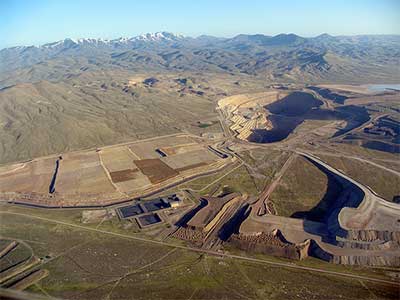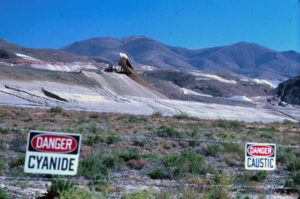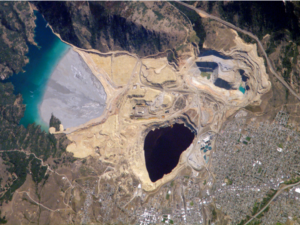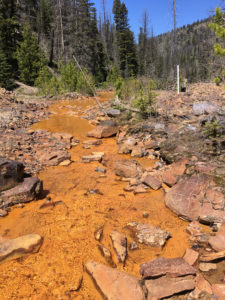A Multinational Mining Industry
The mining industry was different over 130 years ago, when the 1872 Mining Law was signed into law by President Ulysses S. Grant. The law was written to govern the archetypal “miner 49’er”: a grizzled prospector with a mule and a pick axe.
Today, mining is largely the business of billion dollar, multinational corporations operating in a global market. And many of the largest mining companies operating in the United States are foreign owned. For example, according to the U.S. Geological Survey, seven of the top ten producing gold mines in the U.S. are foreign owned.
Mines Visible from Outer Space – Environmental Impacts to Match
A huge mining industry digs huge mines.
Modern mines are enormous operations that leave behind scarred landscapes, polluted water and damaged communities. Hardrock mining, the extraction of metals such as gold, silver and copper, can cause significant impacts on the environment, potentially affecting ground and surface waters, aquatic life, vegetation, soils, air, wildlife, and human health.

That’s because rich mineral deposits, containing visible veins of ore, are a thing of the past.
A modern mine extracts “mineralized” deposits — where the ore contains only microscopic quantities of gold (or copper, silver, etc.) As a result, mining is extremely wasteful. For example, mining enough gold for a single ring creates 20 tons of mine waste.
To extract the huge volumes of waste rock and ore necessary to produce the gold/silver/copper, most modern mines are enormous open pits. These pits often exceed 1 mile in diameter and 1,000 feet in depth. Some, like the Bingham Canyon mine in Utah, are visible from orbit.
The pollution impacts of these operations are proportional to their size: according to the EPA, hardrock mining is the number one toxic polluter in the United States, and has polluted 40% of the stream reaches of the headwaters of western watersheds.



